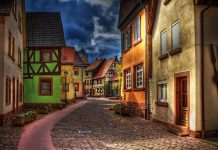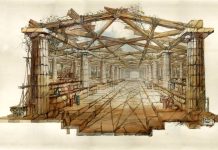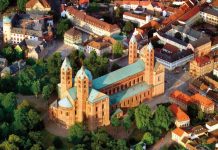Knossos Palace. Previously, the palace was of colossal size, and also had several floors. The complex was built in the form of a maze. It housed apartments of the royal family, servants’ quarters, dining rooms, bathrooms, kitchens, workshops, etc. Many of the rooms were decorated with frescoes depicting events from everyday Minoan life. The palace was equipped with sewerage and water supply.
Mycenaean Walls. They were built of stones of colossal thickness and height. Therefore, the ancient Greeks believed that cyclopes did it. The walls were 8 meters high and 5 meters wide. Delight is also caused by the Lion Gate, which is decorated with two relief lions, which were considered defenders of the earth.
The Parthenon. This monument contained all the greatness of Athens of the 5th century BC. It was located at the highest point of the Acropolis, and is now the best example of the Doric style. The construction of the temple dedicated to Athena was completed in 432 BC. A very interesting fact from an architectural point of view is that there is not a single smooth line in this temple, everything is built along a curve. Including columns that seem to be at an angle of 90 degrees, arranged in a curved line.
Erechtheion. The temple is dedicated to the god of the seas Poseidon and the goddess of war Pallas Athena. The construction was completed in the 5th century. The building stands out for its extraordinary design and decoration. Its appearance was partially influenced by the terrain, as a result of which one of its parts is higher than the others. The temple became famous for its statues of women – Caryatids, which replace the columns of the temple.
The ancient theater of Epidaurus. This architectural monument is an immaculate building of the ancient Greek theater. The unique acoustics of the building is what makes it attractive to tourists from all over the world. The construction of the theater began in the 4th century BC, but it acquired its final appearance only in the middle of the 2nd century BC. Archaeologists discovered the monument in 1881. It included typical parts of the theater, such as the auditorium, orchestra pit and stage. The hall and pit are preserved in almost perfect condition, unlike the once majestic stage, which now resembles ruins.
The Monastery of St. Peter. The monastery was built on a steep cliff and dedicated to the Nativity of Christ. There are 15 chapels in which holy relics are located. It was built in the 14th century, but was rebuilt several times. It is considered the boldest structure in the Ancient world.


















